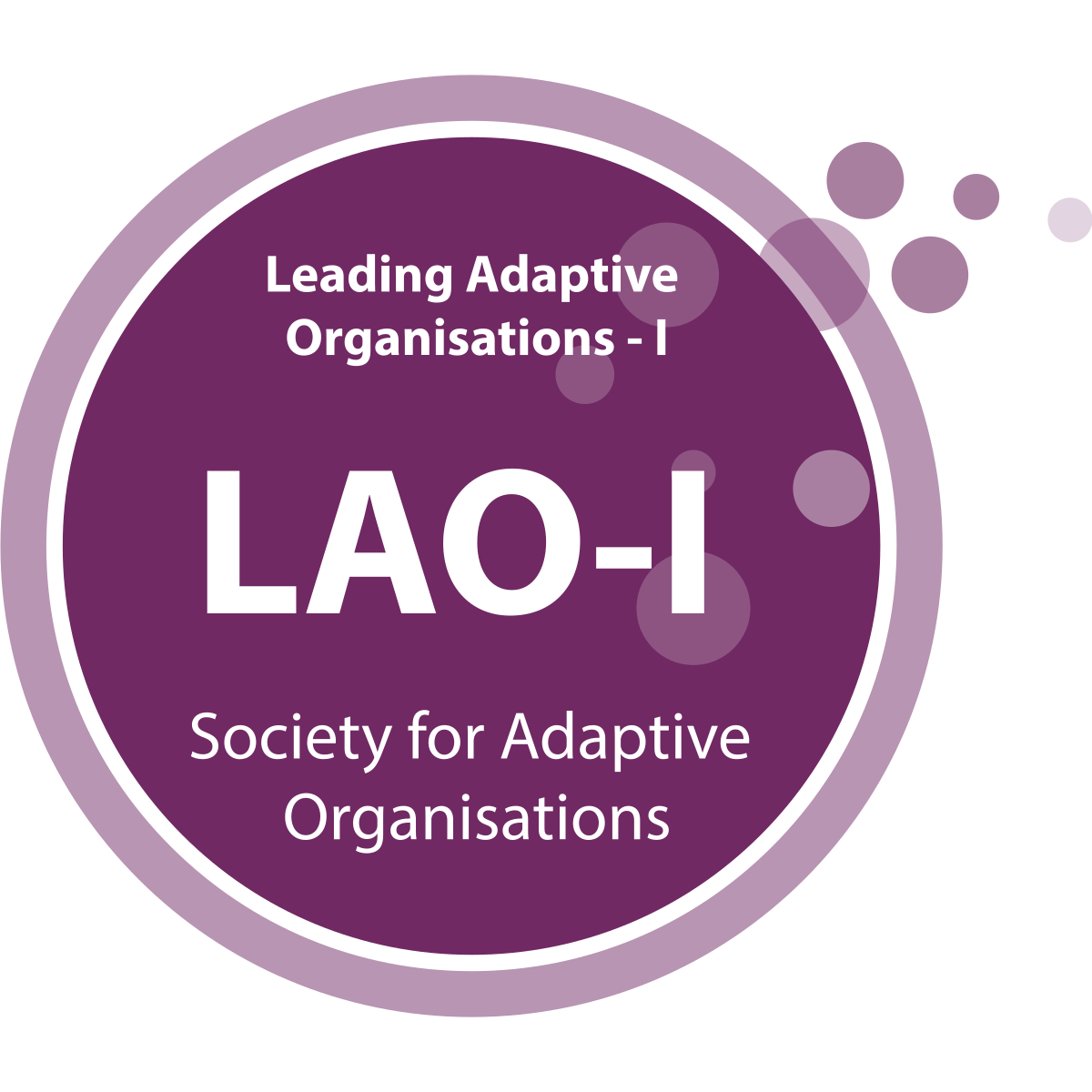Leading Adaptive Organisations

Target Audience:
- Senior managers facing constant organisational change who want to confidently lead transformation initiatives and create genuinely resilient teams and organisations that thrive even when under pressure
- Transformation specialists like Agile Coaches and Scrum Masters who need proven tools and thinking patterns to break through organisational inertia and become catalysts for lasting structural change
- Strategy and innovation managers who want to build adaptability into their organisation’s core operations
- Department heads and middle managers facing the realities of adapting and innovating while keeping operations running
Course Overview:
In today’s volatile business world, rigid organisations die whilst adaptive ones thrive. Leading Adaptive Organisations provides the blueprint for building resilience into your organisation’s DNA, enabling you to turn constant change from a threat into a competitive advantage. You’ll discover the proven principles that help companies not just survive disruption but actually grow stronger from it.
What to Expect:
- You’ll gain a solid understanding of adaptive principles and organisational ambidexterity.
- You’ll learn how to balance operational efficiency with innovative experimentation.
- You’ll master organisational structures that enable adaptability, including moving from traditional silos to product-focused teams and distributed decision-making.
- You’ll discover leadership styles that support adaptive structures and learn principles and tools for methodical evolutionary experimentation.
Your Benefits:
- You’ll confidently lead transformation initiatives.
- You’ll break through organisational inertia and design structures that are genuinely future-ready.
- You’ll create cultures where change becomes second nature.
- You’ll implement structural changes that turn constant disruption into competitive advantage.
Module 1: Adaptiveness by Design – Navigate Change and Activate Strategy
After completing this module, participants will be able to:
- Define organisational ambidexterity – compare organisational forms that promote or hinder adaptability, and evaluate the strategic benefits of optimising for adaptiveness.
- Analyse structural impact – examine how ambidexterity affects organisational design and leadership roles, and identify practices needed across all levels to enable adaptive capability.
- Design feedback systems – debate and create feedback mechanisms that effectively evaluate organisational adaptability and drive continuous improvement.
- Navigate organisational complexity – explain its nature, identify real-world examples, and demonstrate how evolutionary experiments can promote meaningful change.
- Create adaptive transformation proposals – design structural changes that make organisations genuinely future-ready.
Module 2: End-to-end Organisational Design – Structuring for Business Continuity and Adaptiveness
After completing this module, participants will be able to:
- Design adaptive product evolution – demonstrate how to define “Products” in complex scenarios and explain how product evolution drives adaptability and improves end-to-end decision-making.
- Accelerate organisational learning – describe how quick feedback cycles maximise learning and formulate practical options to speed up these cycles in your own organisation.
- Build collective accountability systems – explain how shared responsibility for complete product development minimises coordination overhead and compare traditional structures with adaptive models.
- Model experimentation culture blueprints – create frameworks for fostering sustainable cultures of experimentation and innovation.
Module 3: Aligning Strengths – From Silos to Product Accountability
After completing this module, participants will be able to:
- Transform organisational learning – explain the critical role of continuous learning in breaking down silos and fostering system-wide knowledge for greater adaptability.
- Structure for optimal delivery & learning – differentiate and design team configurations (individual, cross-functional, product) that maximise both product delivery and continuous learning cycles.
- Enable distributed decision-making – analyse how empowering teams with distributed decision-making accelerates organisational responsiveness and enhances adaptability.
- Align and empower teams – identify and apply strategies for objective-based alignment to grant team autonomy, maintain organisational direction, and streamline communication.
- Drive continuous improvement through experimentation – design and execute experiments to systematically enhance the quality and quantity of learning throughout their organisation.
Module 4: Cultivating Adaptiveness through Collaborative Leadership
After completing this module, participants will be able to:
- Master leadership that supports adaptiveness – differentiate between Transactional, Transformational, and Collaborative Leadership, assessing their suitability for driving innovation.
- Compare leadership for motivation and adaptability – contrast Transactional and Transformational Leadership regarding motivation and engagement, and discuss how various styles impact organisational adaptability and boundary flexibility.
- Explain Adaptive Leadership’s role – articulate how Adaptive Leadership specifically fosters organisational innovation and aligns with principles of adaptability.
- Implement Adaptive Leadership techniques – apply specific collaborative leadership principles, such as moderation, storytelling, and connection, to build adaptive environments.
- Formulate practical leadership approaches – create actionable tools for leading effectively in complex and evolving organisational settings.
Prerequisites
- No formal prerequisites; willingness to rethink leadership and organisational design.
Next Steps
- Explore advanced programmes in organisational transformation or leadership development.
- Discuss your journey with our educators to identify your next step towards building a truly adaptive organisation.